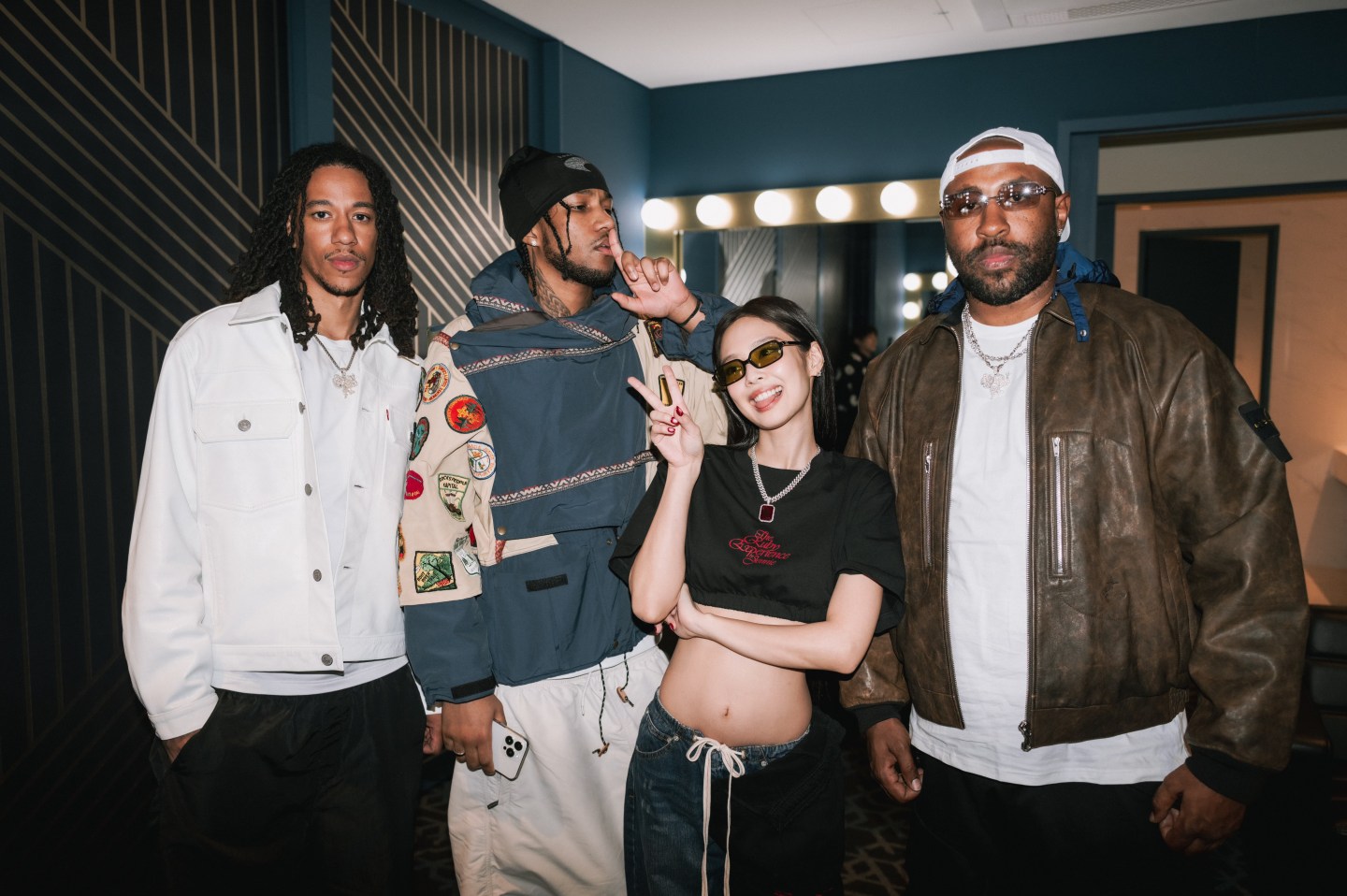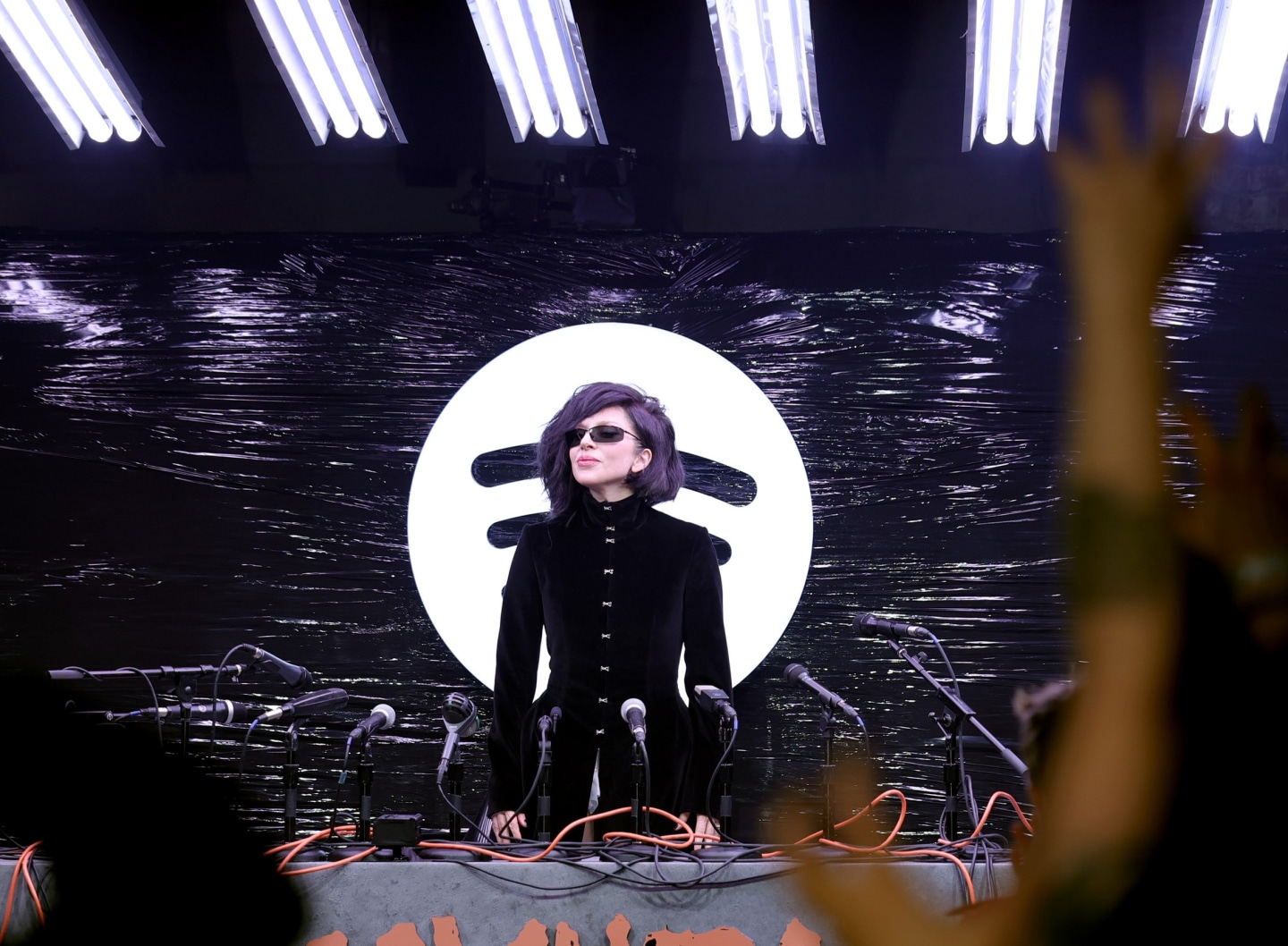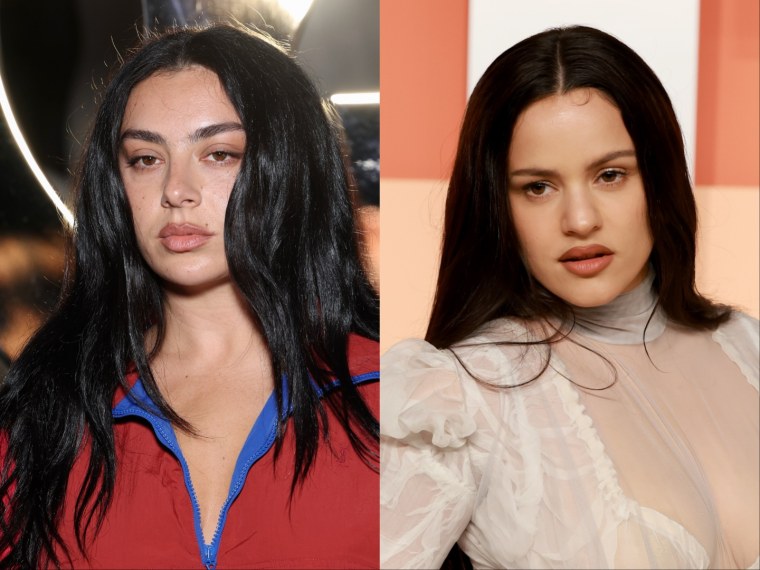Sam Orlin
Jennie settled effortlessly into Mike WiLL Made-It’s Los Angeles studio — shoes off, legs crossed on the couch — during their first studio session for Ruby. Months prior, the K-pop superstar’s team had reached out to Mike WiLL Made-It and producer PLUSS, inviting them to a songwriting camp in Los Angeles. But Mike had a different vision: He wanted her in his space, working directly with his team of producers. “She was bouncing between studios, working with different producers, trying to figure out what her sound was,” he recalls over a recent video call from Seoul, South Korea, where he attended Jennie’s first hometown solo concert and gifted her a custom Ear Drummers chain. “Being in a group this whole time, she knew what she wanted in her mind, but she couldn’t quite articulate it yet. She told me, ‘I’ll know it when I hear it.'”
Between late-night sessions, spontaneous cold plunges, and beats vibrating through the walls, Jennie and the Ear Drummer crew crafted the handful of R&B tracks that would define Ruby, her debut solo album: “Zen,” “Seoul City,” “F.T.S.,” “Starlight,” and “Damn Right.” For Mike, their collaboration wasn’t just about making records, it was about helping Jennie find her voice beyond the group that made her famous.
To piece together the full story of Ruby’s creation, The FADER spoke with Mike WiLL Made-It and six other producers from the Ear Drummers team — Melz, PLUSS, 30 Roc, RESOURCE, MGFMYLES and True Beatzz — about the roles they played in shaping Jennie’s solo sound.
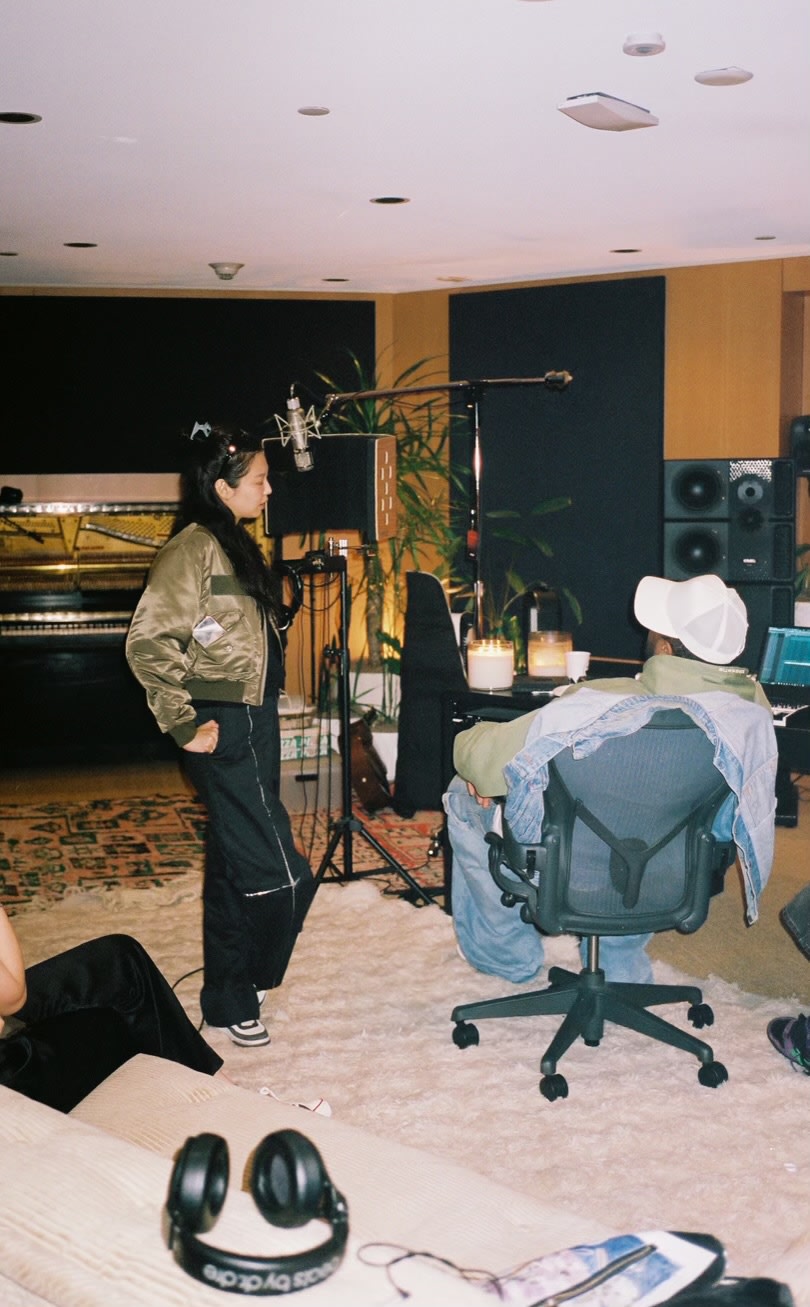
@choeey_
On Working with Jennie in the Studio
Mike WiLL Made-It: I’m always interested in tapping into different genres and tailoring my sound around whatever artist I work with. I’m not bringing Jennie a bunch of beats that I would play for Future or a bunch of beats that I would play for Gucci Mane or Jay-Z. I did my research on BLACKPINK. I was listening to it, and I started scratching my head. I was like, “Oh shit. She’s either gonna be the first artist to hate everything I play, or she wants something so new that she’s gonna love everything I play. But I’m with the challenge.” That’s what the Ear Drummer team is all about: doing something new, something out of the box, and breaking boundaries.
She picked a list of beats, and we had a few songwriters in the room. At one point, Jennie stepped out, and while she was in the next room with Melz, True, Bibi [Bourelly], and PLUSS, they laid down a quick idea — just something off the cuff. I didn’t expect it, but it ended up being dope. That’s when I knew we had a rhythm on day one.
PLUSS: I heard of BLACKPINK, but I did not have a clue how big they actually were. My daughter was a fan before me. I had no clue who Jennie was. Then I told my daughter we were working with Jennie, and she lost her mind.
Mike WiLL Made-It: You’re either cool or you’re not. And Jennie, I could just tell she was cool as fuck.
Mike WiLL Made-It: It’s crazy because we literally made that beat in the kitchen at my studio. I cook a lot, so I was in there cooking one day, and me, 30 Roc, and True were just in the studio, working on different stuff. My space isn’t a traditional studio — it used to be an art gallery, so it’s super open and collaborative. 30 Roc and True had started on this R&B track, and as soon as I heard a melody that caught my ear, I jumped in. I love doing drums — out-of-pocket, weird drums that are on-beat but feel off-beat, something fresh. So I hopped in, added the drums, and that was one of four or five beats we made that day. For Jennie to pick that beat? That was wild.
30 Roc: I remember pitching it down a little, and then everything really came together after that. That really set the tone for the beat; we all knew where we were going after that.
Mike WiLL Made-It: Watching Jennie and Bibi cook up the song was crazy. At first, it was just Jennie solo, but then she brought on Kali [Uchis] and Donald [Glover]. I had so much fun mixing it, adding breaks and pauses, and structuring it. The beat already had this insane vibe, and Jennie’s voice just matched it perfectly, almost like we made that beat for her in that moment.
Melz: I love when artists like that get together. It was so unexpected. I would never have thought to put this person on this record, you know? When she first heard the beat in the studio, she was bobbing her head, like, “This is going to be something different for me.” And that’s so fire that she went ahead with confidence and laid it down.
“That’s what the Ear Drummer team is all about: doing something new, something out of the box, and breaking boundaries.” — Mike WiLL Made-It
Creating “Zen”
PLUSS: She liked it right away — it was just a vibe. We were at our headquarters in Atlanta, messing around with sounds after finishing another song. As soon as the music started playing, everyone — Bibi Bourelly, Jennie’s A&R Nicole [Kim] — was like, “What is that?” Bibi added her touch, and it kept growing into this colossal sound. We brought in other writers to add different seasonings, and it grew into a full-blown banger. When Jennie heard [the complete demo] in LA, she was like, “Yo, this is crazy.” She cut it the same day, and hearing that first take, she sounded so good on it. We made sure that she kept that powerful delivery.
Making “Starlight”
PLUSS: That song captures that familiar K-pop feel but with a bit of an American touch, especially with the 808s. It was really for her die-hard fans. We made it all in the room in L.A. — I was playing around on the keyboard, and when everyone liked the sound, we recorded it. Then Melz came in and added this crazy reverse melody that gave it that final glaze. True later came through and added some 808s and kicks, which took it exactly where it needed to go. Everything just clicked.
Melz: Me and True were in the other room cookin’ up, and we’re just hearing PLUSS, like, damn, he’s going crazy in there. We walked into his room, and we were like, “Whatever this is, it’s fire.” And he just looked at us and said, “Add y’all’s swag to this.”
PLUSS: She ends her concert on that song, and I didn’t expect it to be so emotional for her. When I saw her perform it [in Los Angeles], she almost had tears in her eyes. Like, dang. I thought this song was supposed to be fun. [Laughs.]
Saying “F.T.S.”
PLUSS: We had just finished another record when Jennie said, “We need a ballad.” So I started playing something slow on the computer — just straight piano — and she liked it. Our engineer, Gage, who’s super musically inclined, replayed it with his own touch, and it all came together. I added some cinematic percussion for drama, but it never builds into a full beat drop — just Jennie singing over the piano.
She and Bibi had a deep conversation about something serious before this song came about, and I feel like it’s a direct product of that moment. It’s her getting something off her chest. I’m glad she was able to open up so much to the point where she really didn’t care what people thought. You obviously don’t care what anybody thinks when you drop a song called “Fuck That Shit.”
“Twin” magic
Mike WiLL Made-It: Gage, who’s our engineer, is also an incredibly talented musician — he plays piano, guitar, all kinds of instruments. We were working on another song, but sometimes, when you’re on a track for too long, you need a reset. So we cut the music for a second, and Gage was just in the corner messing around on the guitar. Then Bibi was like, “Wait, what’s that?” That’s how it started. Jennie and Bibi just started vibing, tailoring it into something that felt right for Jennie. It all came together naturally — no one forced it. That’s the energy I always try to create in my sessions. Everyone plays their role, like a team in a sport, and when it all clicks, it’s magic. That’s why I love that song so much — it’s real heart.
“I’m glad [Jennie] was able to open up so much to the point where she really didn’t care what people thought.” — PLUSS
Finding “Seoul City”
RESOURCE: I started the idea back in 2019. Mike had mentioned needing some beats for Miley Cyrus, so when I started creating the sound, I was envisioning a bluesy, psychedelic rock style, with a little bit of soul, a big arena-type vibe — nothing pop. I made a live drum loop and took a guitar melody I got from Xeryus, another one of the producers who worked on the track. I arranged some other live instruments around it, like live bass and some keyboards. Once I had an idea, I sent it to Mike, and he sent it over to Myles, letting Myles do his thing.
MGFMYLES: Mike WiLL sent me a .wav file of the guitar melody, live bass, and live drums that Resource and Xeryus had laid down. So, when I got it, I treated it like a sample and flipped it into a beat. It immediately gave me festival vibes, so I continued in the direction of how it made me feel. I sped it up, added 808s, hats, snare, and a melody to it, then sent it back to Mike.
RESOURCE: I was surprised by the direction they took for the song. When I imagined K-pop before I ever heard the actual song, I had no idea what it would sound like. Me and Mike make all types and styles of music, so it really could’ve been anything. When he played me the song, my mind was blown because I felt like that record had a lot of rock and soul elements, and the song ended up being named “Seoul City.”
MGFMYLES: She definitely took it where it needed to go sonically and vocally.
Jennie’s songwriting process with Bibi Bourelly
Mike WiLL Made-It: Bibi is like a walking jukebox. She hears a beat, and she just takes off. When she and Jennie started vibing, I’d step out and let them do their thing — just talking, bouncing ideas back and forth. Then I’d come back, and suddenly, there’d be a hook and a verse. They’d be sparring, like, “Oh, what if we say this?” or “What if we flip it like this?” Whatever they were talking about would turn into a song.
PLUSS: Bibi gave her all that girl talk, all that girl power, that helped a lot.
Melz: We recorded so many songs over those two weeks — I even lost track of time. I remember Jennie and Bibi just talking, sharing stories, and we’d all chime in. If the conversation took a sad turn, I’d start playing the keys, and suddenly, those chords would spark something. They’d start freestyling, and the whole room would just move in unison.
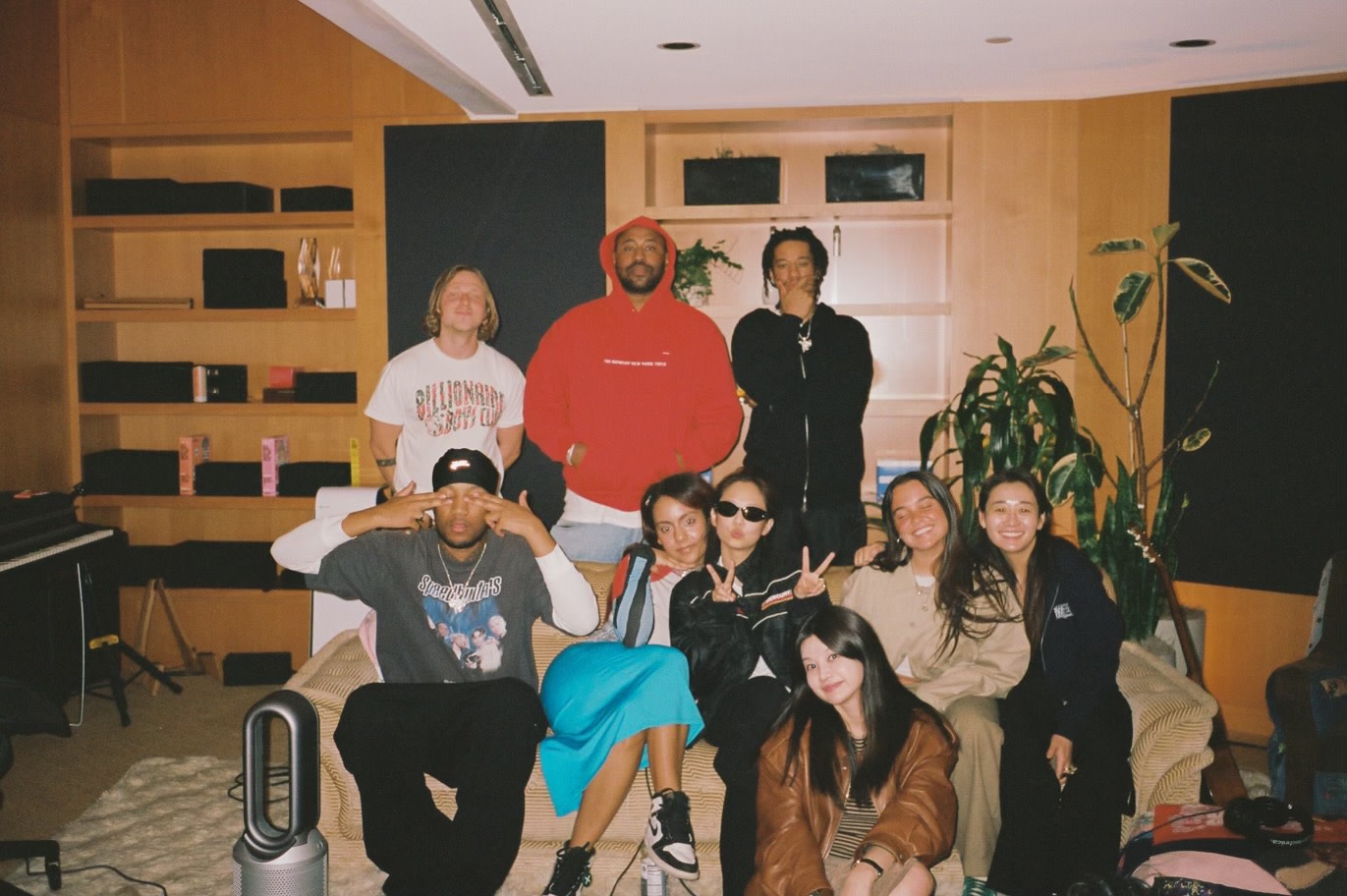
Sam Orlin
Creating a collaborative studio environment
Mike WiLL Made-It: We had multiple rooms — Melz and True cooking something up in one, me and PLUSS in another. We were all trying to create fresh sounds beyond the beats she originally picked. Bibi might walk into a room, hear something, and lay down a melody. Jennie would come in, hear that, and say, “Oh, I like that one. Let’s try it.”
PLUSS: She really opened up to everyone in the room, sharing her experiences making music in Korea and her desire to step outside the box sonically. We’re just a crew from Atlanta, and she came all the way from overseas, but she connected with everyone. She loved everybody — True, Melz, Mike — whenever she saw them, her eyes lit up, and she gave big hugs. That kind of energy makes a studio session feel natural instead of stiff.
Melz: I remember plenty of times when we’d all be in the studio after the session, talking for at least two hours. We were in there all night.
True Beatzz: It felt like we’d been working with her. The excitement in the room when we made “Starlight” and everyone jumping around… It’s like we were family from the jump.
Melz: She was paying attention to the details. She’d do a line over five to 10 times. You could tell she wanted to own every single word and mean it. As I was watching, I was like, damn, this is how it looks to be a real musician who takes it serious. It was inspiring for me as a producer.
PLUSS: She didn’t play about her recording process at all.
“You could tell she wanted to own every single word and mean it.” — Melz
Finding Jennie’s sound
Mike WiLL Made-It: Jennie really trusted the process, and we trusted her as an artist. No one told her, “This is what you need to do.” Everybody in the room was already successful, so it was about being open-minded and working toward a common goal — making a classic song, or even a classic album. It reminded me of working with Miley [Cyrus] for the first time. How do you custom-make a sound around an artist who’s already established but stepping into a new chapter? I love that challenge.
PLUSS: When she first came into the studio, one of her key points was Rihanna. So I figured she wanted to go big. I’m not saying BLACKPINK isn’t big — they’re humongous. But with Rihanna being an influence, it’s like, I see what’s going on.
Melz: I remember her saying in one of the studio sessions that she was very open to experimenting. And that’s when I was like, Oh, she’s really trying to take it there. When the artist says that they’re willing to experiment and try different things, something good’s gonna come out of it. Personally, she challenged me to try something different, and it opened my eyes and ears to some new stuff.
PLUSS: She wants this turning point — she wants to switch the dynamic, just like the rest of [BLACKPINK]. They’re all exploring solo work, seeing if they can fly on their own, and they’re making great music. This will put them in a new space and show people they can shine both solo and together. For us, it’s huge too. We come from hip-hop, R&B, and commercial rap, so tapping into her world, which is such a different style of music, and finding success with it is a turning point for us as well.

Sam Orlin

